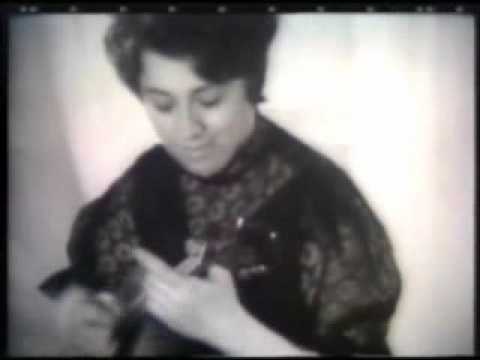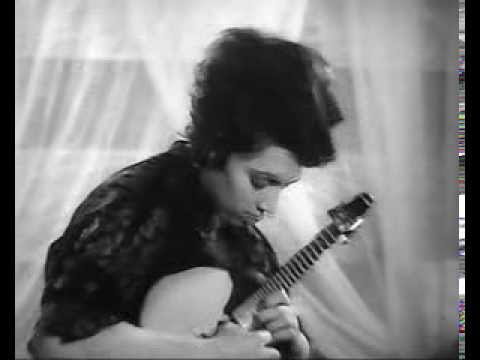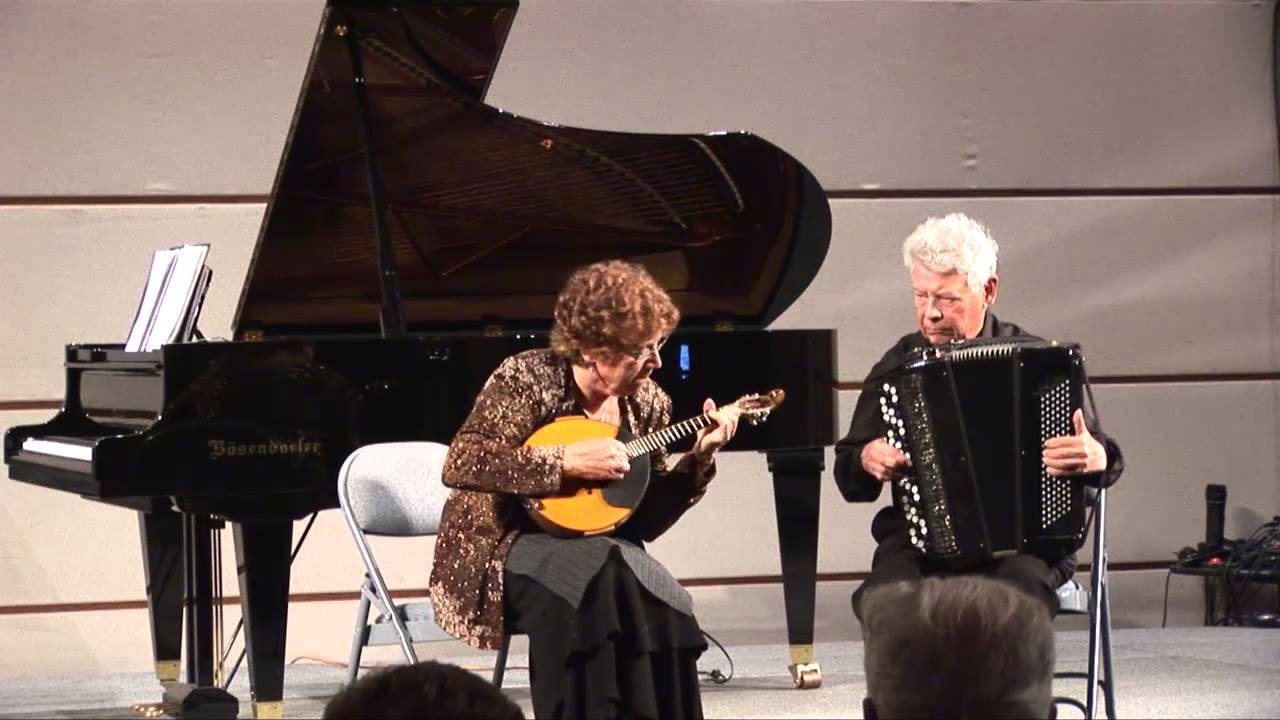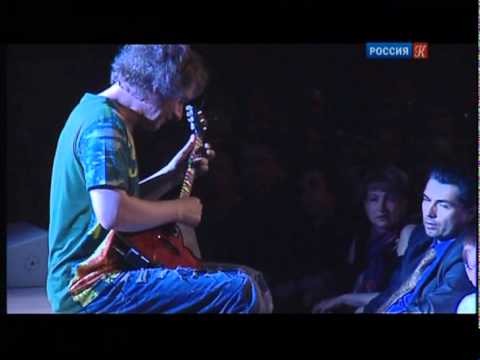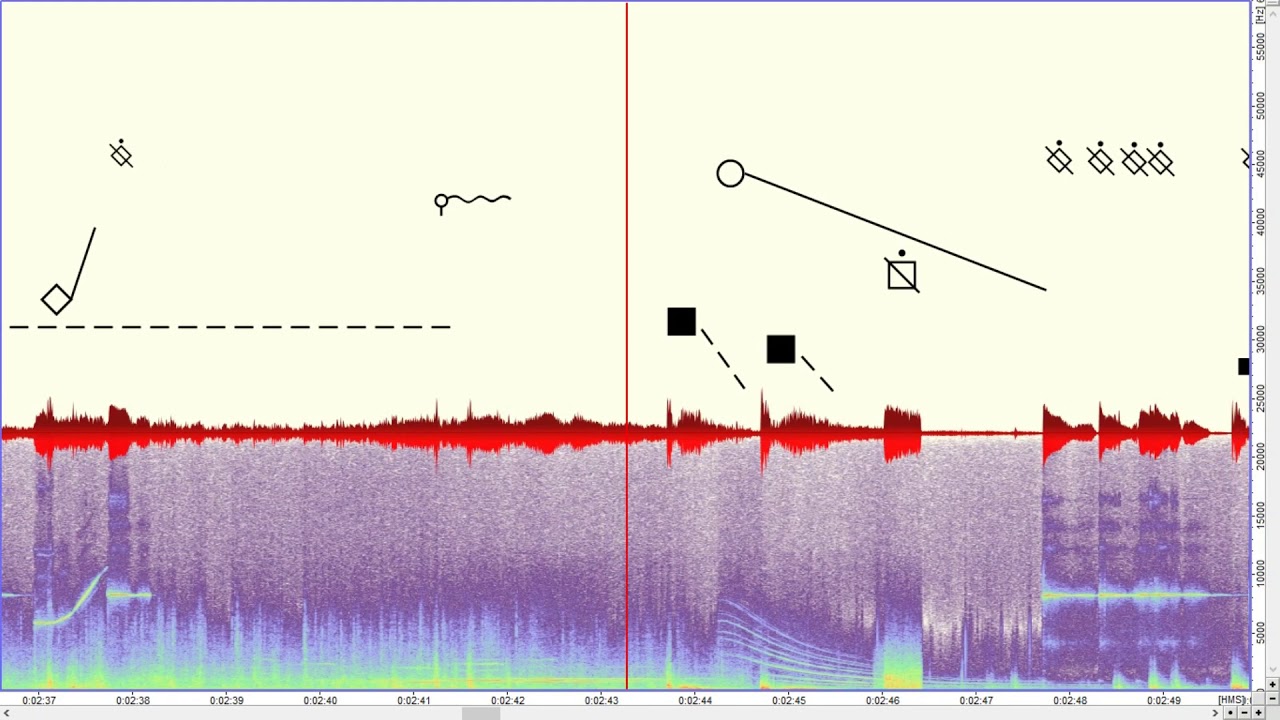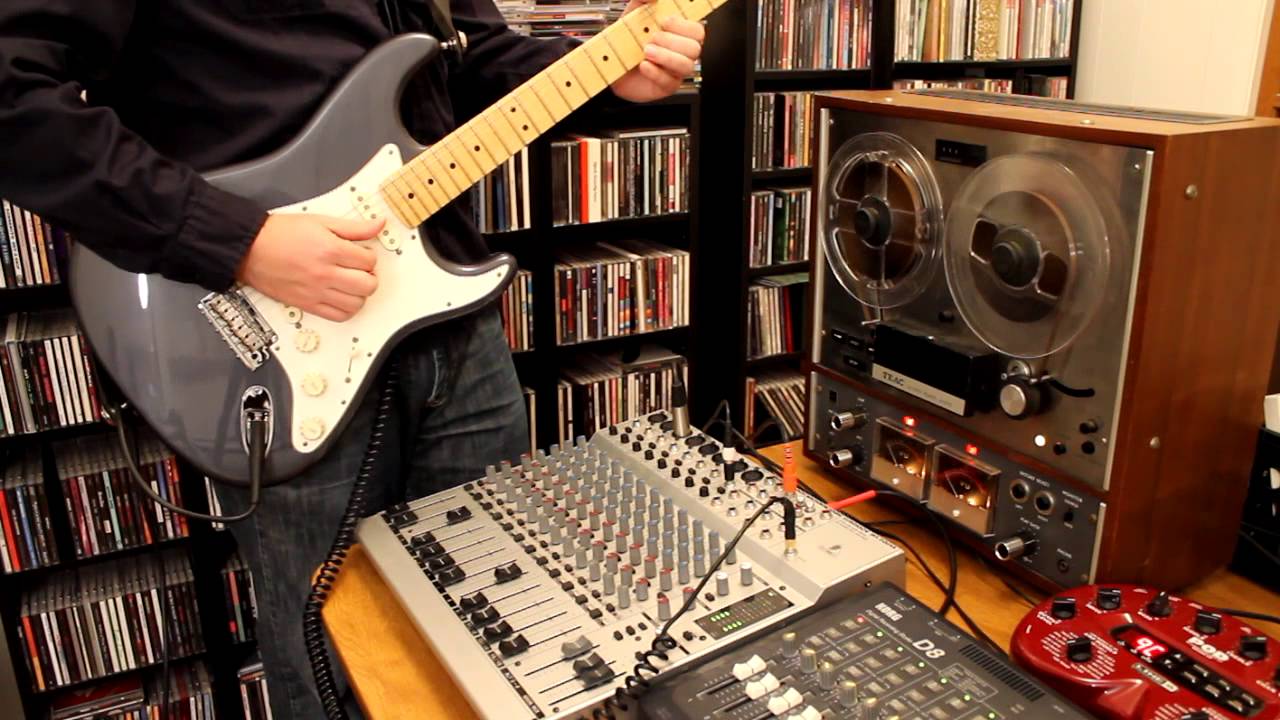For some flabbergasting alternate picking chops, you need to see this clip with russian domra virtuoso Tamara Volskaia:
Wow, would never found this on my own, thanks for sharing! Also, the quality and angles used are quite decent for seeing the picking motions considering how old the recording is!
Thanks for posting. I’ve seen this before and could not for the life of me remember her name or what instrument it was. I thought it was balalaika.
If they make a vaccine we’ll go and find her!
That was some really good playing!
The only one i heard before that could do justice to the classical repertoire with a pick is Chris Thile.
If anyone has some tips on More stuff like this, please post it!
Even though I’ve got formal classical guitar training, I never looked into classical mandolin or domra history/technique. I’m curious if it’s standardized to the extent of classical guitar. “Thou shalt hold they right hand exactly this way” etc. She’s clearly got some mad elbow mechanics, and when she’s playing slower stuff I see more forearm rotation. I can’t help but wonder if this is the product of her own intuition, her conservatory training or combination thereof. If even some of it’s what she’s been taught…maybe we should track down some conservatory level Russian domra instructors and see what it has in common with the shred technique we’re learning on CtC!
Rusty Cooley is jealous of the elbow technique 
I think she lives in NYC. Those arpeggios in the final are pretty amazing, and no sweeping - strictly alternate picking with some elbow motion. And the dynamics!
Could someone translate or explain what she’s showing at around 2:30 in the second video from 2019? What are big jumpy or vibrating pick strokes for?
Too bad there’s no faster playing in that video so we could see her technique in HD! Is there some newer video available of her playing? 
Such a beautiful interpretation of classical repertoire. Thanks for sharing it. No way I’d have found it on my own!
And yes, great technique displayed here.
I was curious about the shaking motion but she doesn’t explain it in this video. My guess is that she’s applying pressure behind the bridge with her wrist to get a slight vibrato on a sustained note.
What she does explain in the video are 6 pick stroke variations. These are divided into “swinging” and “non-swinging” motions.
- The “striking” or “percussive” stroke (0:38). The pick starts its stroke some distance away from the string and is positioned perpendicular to the string (I assume this means there is no pickslant or edge).
- The “throw” (0:52). Very similar to the “strike” but the pick accelerates as it approaches the string for an even more percussive sound. She mentions that the fretting hand fingers must also move in an accelerated manner, and that coordination between the two hands must be developed.
- The “shove” (1:38). When the wrist and forearm move together, like a hammer.
- The “sliding” stroke (1:56). The pick is positioned at an angle relative to the pickguard (slanted). She mentions that this results in the fullest possible sound. The left hand frets the notes gently. It seems that her pick grip is also loosened although she does not explicitly say it.
- The “pressure” stroke (2:30). The pick is placed on the string and bends the string before it is plucked.
- The “weighted” stroke or “tenuto” (2:48, explained futher after 15:27). The wrist and forearm are relaxed. I don’t fully understand her explanation here but my interpretation is that the weight of the hand and forearm are involved in performing the stroke.
There’s probably some specific terminology that I’m unfamiliar with, so forgive me if these translations are too literal.
Thanks for the translations! 
I was thinking something similar too, as I can not see how shaking the wrist, hand or arm could affect the picking motion after the note has already been plucked.

Bonus pic from the 80’s…the 1880’s!
I know we focus on right hand a lot, but I am curious how many people are bringing the thumb all the way around (violin style) on the left hand when going fast. I’d see violin players go fast with in that position, but it always seemed to me that the position just hampered the reach too much.
I looked through some newer videos, but I didn’t see any examples of the over the top speed and fluidity present in the black and white footage. I wonder if that’s still in the repertoire – maybe she’s going through her “blues era.”
Let me put two cents on the matter (about balalaika and domra).
There is no doubt that balalaika is one of the first things, assossiated with russians. Most of people (even in Russia) think of balalaika as some old “grandeval” folk instrument. But what if I tell you that balalaika, in the sense we know it, actually is a quiet modern instrument (we even may say that it is much younger then russian 7 string guitar).
Till the very end of 19 century balalaika was just a homespun string instrument which peasants made for themseles usually out of the cheapest materials, and sometimes even garbage. Initially, ‘balalaika’ is kind of derogatory word similar to russian equivalent of ‘to noodle, to jabber’. So there were no common standarts AT ALL:
- the number of strings varied from 2 to 6,
- no more or less ‘standart tuning’
- no conventional techniques (nor any teaching materials), somebody played with pick (it was usually bent piece of metal string), somebode with fingers.
- even no common body shape (not all of the balalaikas were triangle-shaped)
- and even no common fretboard system. Frets were tied to the the neck, usually resembling some diatonic scale.
So it was unprofessional and unrespected instrument (especially in the cities).
Then one evening in the 1880s a man whose name was Vasily Andreev heard some folk playing balalaika. Andreev got so impressed by his playing, that he started taking balalaika lessons from him, and even decided to make balalaika a qualified professional instrument availible for common people.
It was literally an insane and very daring idea: when he asked a professional luthier to build the first prototype (he began to develop the instrument by himself), luthier considered it as some sort of offense, and to convince him Andreev had to play the instrument. Even after that the luthier agreed only on condition of total secrecy. Btw, funny fact balaika got patented in Germany by one of the first balalaika luthiers Paserbsky. Anyway that’s how crazy was this idea.
Because of the time, context, and his background (he was kind of mid-class intelligent) it meant creating academic-like system:
- developing standarts for technique, tuning, construction
- finding the gist or ‘gimmick’ of the instrument (its own character), in order to prove its professional existence (I mean a simple copy of some already existent instrument would not get much attention)
- organizing academic teaching system
- creating professional orchestra of russian folk instruments
He also wanted to combine it with high accessibility, so it would be easy to get into playing unchallenging tunes. For that reason he used unison tuning (E-E-A; btw it is called academic tuning), so the chords and combination of rhythm and lead parts together are less harder to play.
The instrument, he and his ‘team’ created, got very unique and distinct. As for me that’s the example of great to-a-nicety consideration, even with the strings type: E strings are carbon or nylon (I know that there were no such materials by that time) and A string is metal, which allows musician create polyphonic effect, as if two instruments with different tones are playing together, on 3 strings instrument!!! 1:50 an example from one of the greatest balalaika virtuoso Alexey Arkhipovsky
Domra was also created by Andreev, and the story about it is some sort of mistic. Initially, domra was a historic instrument from late medieval period, assossiated with ‘scomorokhs’ (travelling ministrels). The government did not like them, and by the 17 century they disappeared (there are lots of discussions, cause of the lack of information about them). As a part of countering scomorokhs, there was an act of confiscation of all the music instruments from common people. Since they were mostly cheap and unprofessional, government did not see much cultural significance in them. After that domra entirely disappeared (there are lots of unclear questions, as to why some other instruments survived and domra did not, or why did it disappear on territories in adjacent countries, inhabited by russians etc.) So by the 19 century for the overwhelming majority of russians (except for some historians and educated people keen on the theme) the word ‘domra’ was the same obscure as it is for lots of cracking the code viewers:)) Anyway the story tells that Andreev, while travelling through North-European parts of Russia, found some strange archaic instrument, matching the description of domra, on which basis he recreated domra (these places are usually deemed as more archaic with more remains from times before late 17 century westernisation). But it seems to be more prosaic and practicaI, remember I wrote about playing balalaika with a pick? He might simply create an instrument for playing with pick (cause they designated balalaika to be played with fingers. And they also developed finger balalaika technique). That’s the one of the main differences: BALAIKA IS TRIANGLE-SHAPED AND PLAYED WITH FINGERS, DOMRA IS ROUND AND PLAYED WITH PICK.
I think Andreev was a genius visioner, who managed to turn strange idea into long-standing concept and also management genius who gather great team. Interesting fact, after all everyone liked the idea:
- the most important it became super popular among common russians
- imperial government also loved it. So much that they started to teach balalaika in the army. Andreev personally oversaw the teaching sysem.
- soviet government also liked it. Opposing ‘folk’ culture to aristocrats’ one along with stirring the whole struggling topic was a substantial part of ideological propaganda. So they did not stall andreev’s instruments and system, as they did with russian 7 string guitar.
A LITTLE OFFTOP (since it is first of all a guitarists forum): russian 7 string guitar was an adaptaition of guitar which got very popular in Russia in 19 century. Unlike balalaika it was a respected instrument popular among townspeople and intelligence. It was used mainly as a main accompanement for romance songs, it is played with fingers but without long nails to get soft and quiet tone to match the songs. Other interesting thing is the tuning: it is open G (yeah like oldschool blues stuff) with low D. It was one of the most popular instrument and the most common version of guitar. Soviet government did not abolish it overtly, but they did not like the instrument simply because of the repertory and its background (it did not match ideology), so they fought with it surreptitiously. It remained the most popular version of guitar till 50s. Finally Soviets killed russian 7-string guitar. As one of the most famous 7 string guitarist Sergey Orekhov said he would ‘never believe that russian 7 string guitar got superceded by 6 string one’. Anyway nowdays 6 string guitar is way more popular in Russia then balalaika, domra, 7 string guitar all together.
LET’S CONTINUE:
- foreign people also got impressed. Andreev’s orchestra had so great success with Western scene, that even balalaika stereotype appeared.
So Andreev did an incredible impact on russian music, I mean it is very rare when some initially folk music becomes a part of academic music (off the top of my head I can name only jazz, as an example). We in Russia usually take it as granted and neglect it, forgetting about the amount of work put to make it happen. I wanted to share this information with you, maybe someone would find it interesting. I would like to comment on some technique stuff you discussed (not in that long way, and not right now), and share some stuff someone may find helpful.
Thanks for the narrative! I’d discovered Andreyev and a little about what you wrote about after searching up the Domra, but your writing really ties it together.
I am likewise intrigued by how the lines are drawn for “academic” styles and how those come about. For instance, the “musique concrete” (con-CRETTE…I can’t figure out how to put the accent in) movement from the 50’s through the tape era was appreciated as VERY academic – kind of the land of things like “concept art,” if you catch my drift. In case you don’t, “Concept art” means “the art is in the Concept of the work.” It’d be like premiering a tape music piece in which you cut up 50 pieces of tape and spliced them into an order…OK, but the order was determined by…let’s see…something like “the areas of each randomly cut tape section were compared to the areas of the 50 states and arranged in rank order, each piece of tape was assigned its “state,” and these were then arranged in alphabetical order of the “state,” from Alabama to Wyoming, and this was the order of the splicing. And the piece is entitled “Magnetic Plastic States” (note double meaning) and represents the interplay of technology and people.” How does it sound? That’s secondary – you’re stating outwardly that the “art” is in some part of the process!
If you steal that and use it for your Musicology Ph. D. thesis, at least give me credit (or 10% of the stipend from your subsequent professorship!).
“Art is what the artist SAYS it is.” – Andy Warhol
Regardless, I had to dust off some crazy vinyl, CD’s, and yes, 1/4" tapes that I’d request at the university music library to hear works of the likes of Ussachevsky and Xenakis – they weren’t “burning up the student headphone stations” like, you know, Horowitz plays Chopin or anything (“Vladimir Ussa…who?”). The sounds that really got to me the most were the “tape music” sounds – things like feedback loops using reverb/delay as well as the time difference between the tape crossing the record head and the repro head, or recording tracks or effects in reverse, varispeeding…
I mean, here’s one:
First of all, this is pretty cool, if you ask me, but also, who the heck was making sounds like that in 1957?
As a side note, recognize that in the pre-YouTube era, finding that obscurity you were looking for could represent a “quest” of sorts – it’s not like we could all go to Greenwich Village and buy bootleg double albums at $50 a pop or get in touch with a network of the 1 or 2 people in each town, spread out, who were enthusiastic fans of [insert forgotten indie band here]. So if you finally found out that your friend had some obscure record Peter Buck said was cool, you bet you’d find a blank side of a Maxell or a TDK 90-minute cassette to dub it onto and then play it over and over for a while until the “truth within” revealed itself or whatever. That’s actually something I think is a little lost in the “click here!” world – it’s not for lack of attention span, because everyone knows that the “deep dive” is kind of a sign of the times, if anything. But the paradigm shift to instant, unlimited access really has the potential to paradoxically stunt exploration of the unfamiliar, if you let it.
In case you’re wondering, I had some good times trying some of these tricks with a 1/2" Otari 5050 Mk III. But the truth is that I’d already done the reverses and the varispeeding with a cassette 4-track, you know, trying to get that “pre-verb” like on the Def Leppard snare. But there is NOTHING like having a couple of faders to drive the feedback loop that’s hitting the tape over and over – slamming the tape compression but trying to stay off that distortion cliff where everything “crushes…” – I highly recommend it. A tape Echoplex can get some of the same kind of grit.
So he’s getting it with a 1/4" Teac. Anyway, fans of U2 will definitely get this sound. But the reason I bring it up is, OK, why is Xenakis “academic” but someone like Daniel Lanois is part of the greater “pop/contemporary” world?
It’s like, “never the two shall meet,” unless, you know, your name is David Byrne or something…
It’s great that this thread still exists, I couldn’t find those black and white videos anywhere, some of them were set to not public apparently. Seriously guys, type Т.Вольская in youtube search bar and get ready to experience some of the scariest picking ever. Also, her dynamic control and overall musicality is out of this world.
This vid is also really cool, shows you what the results of right education are. 15 Vinnie Moores in one room.
16-notes at bpm 185 in perfect unison…

